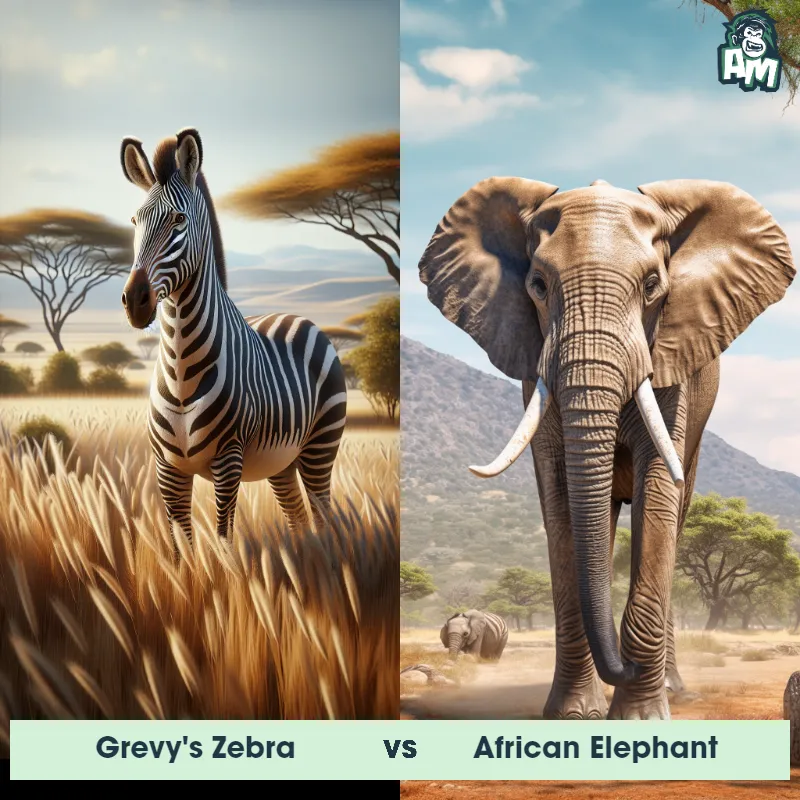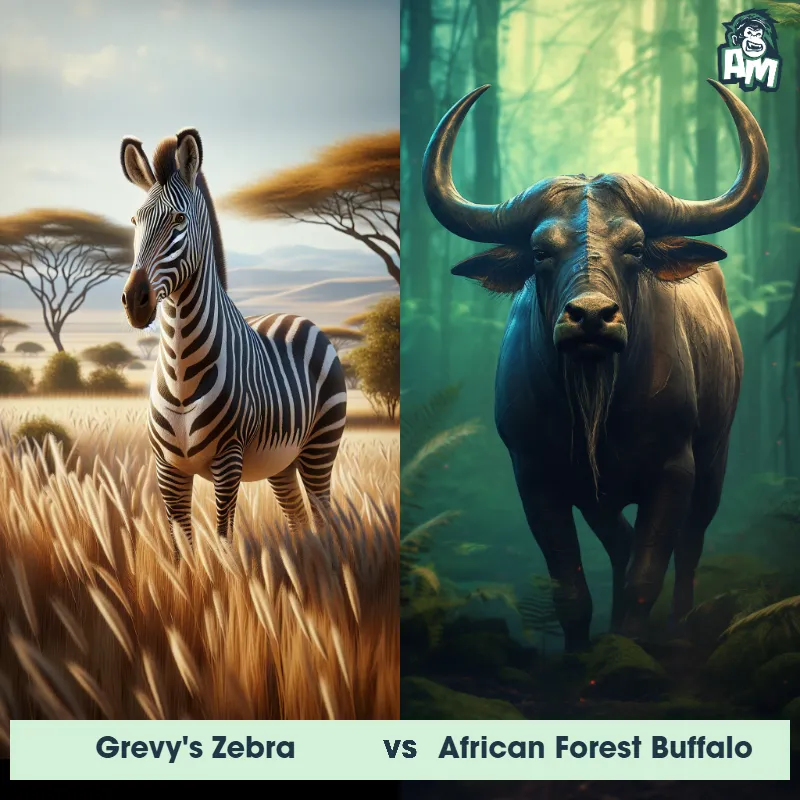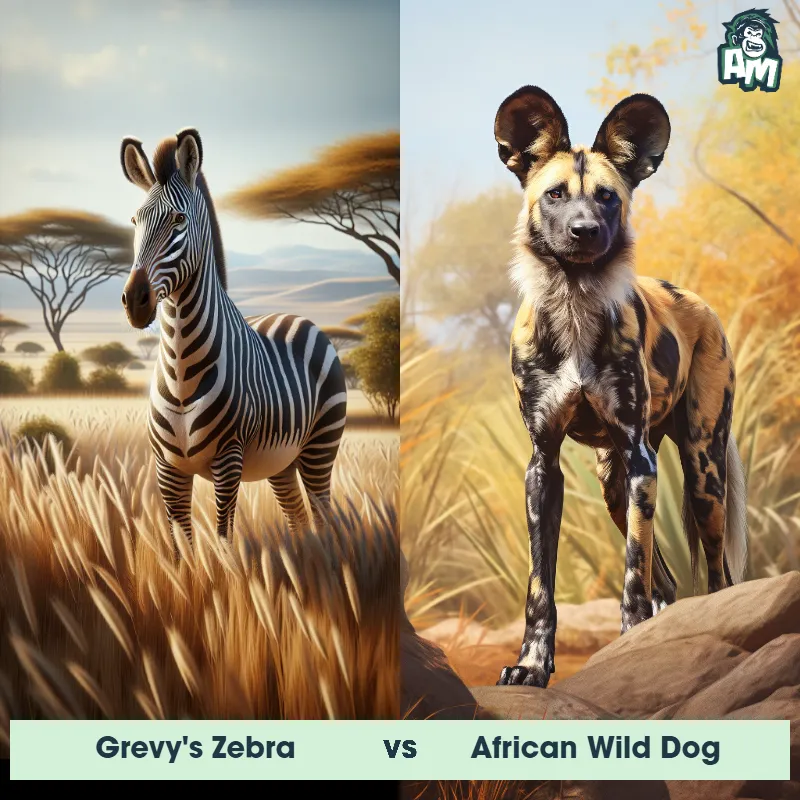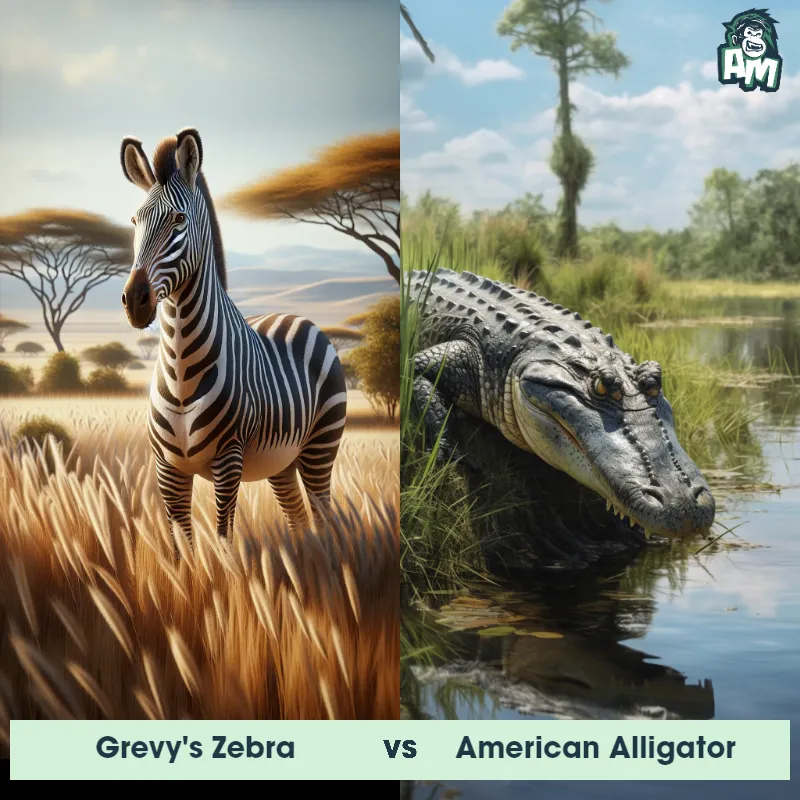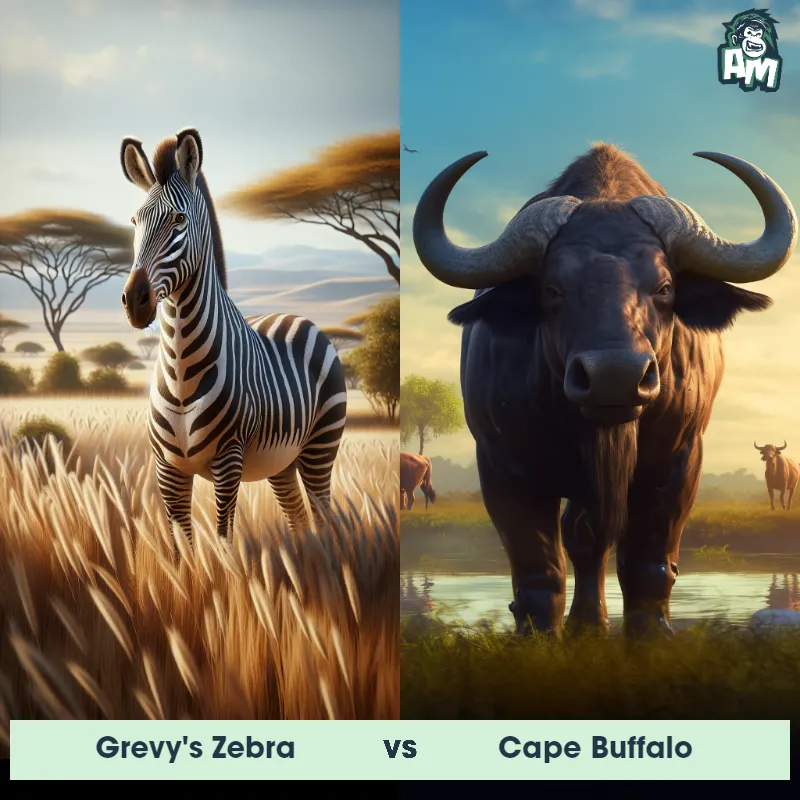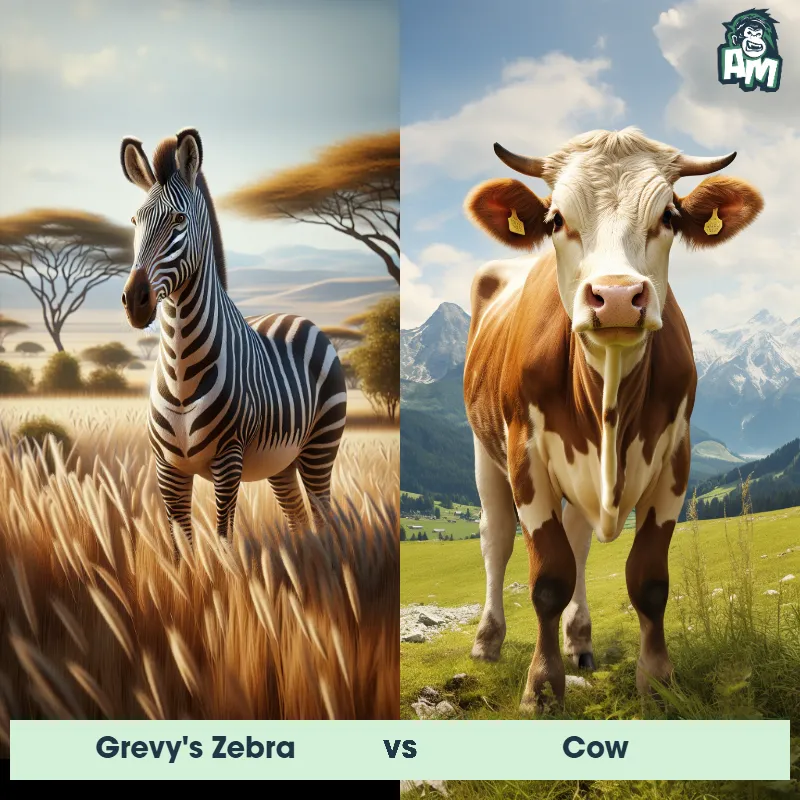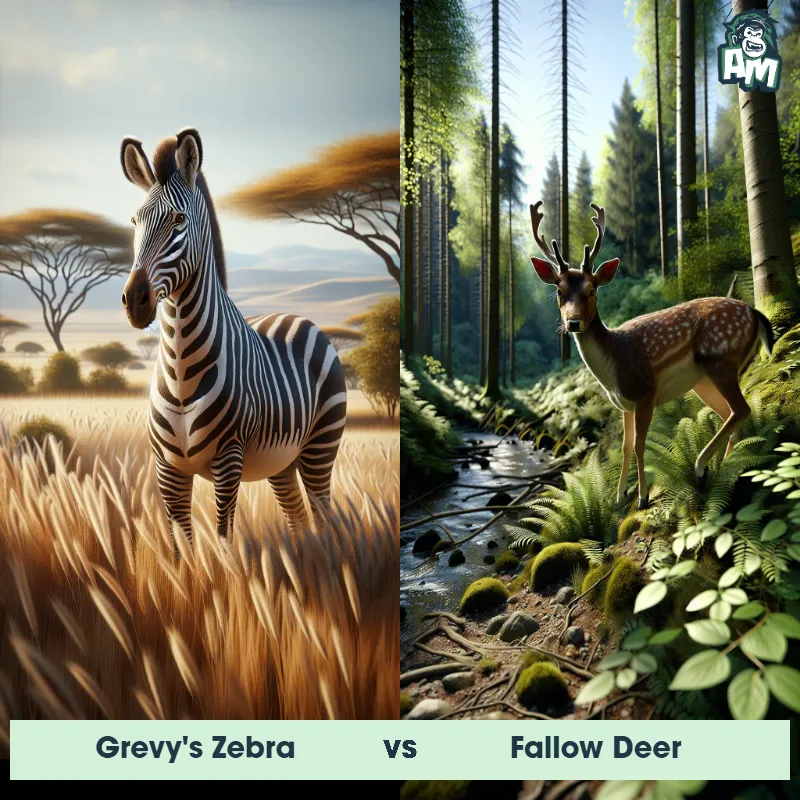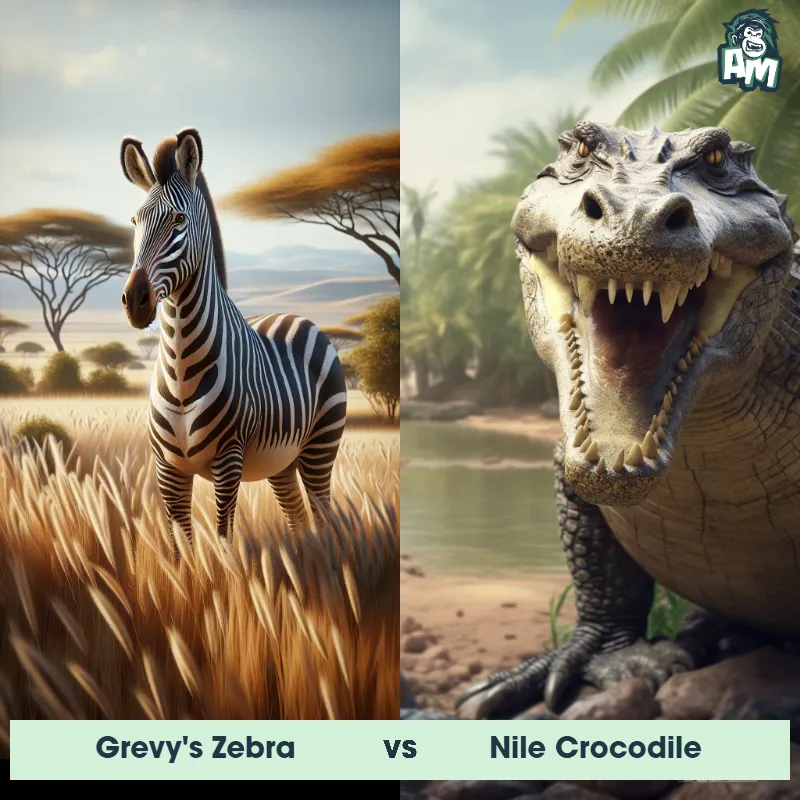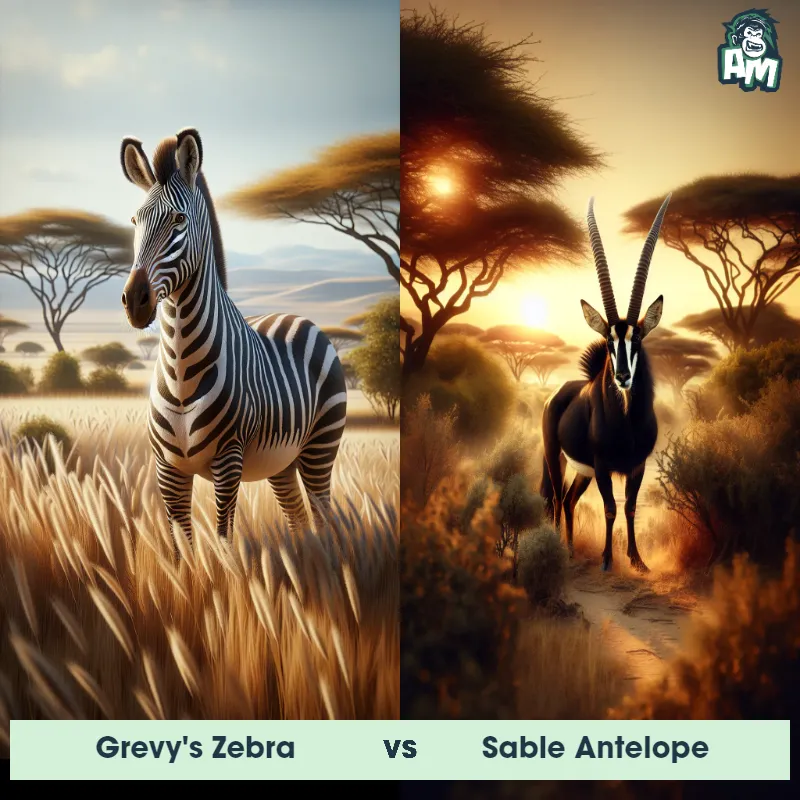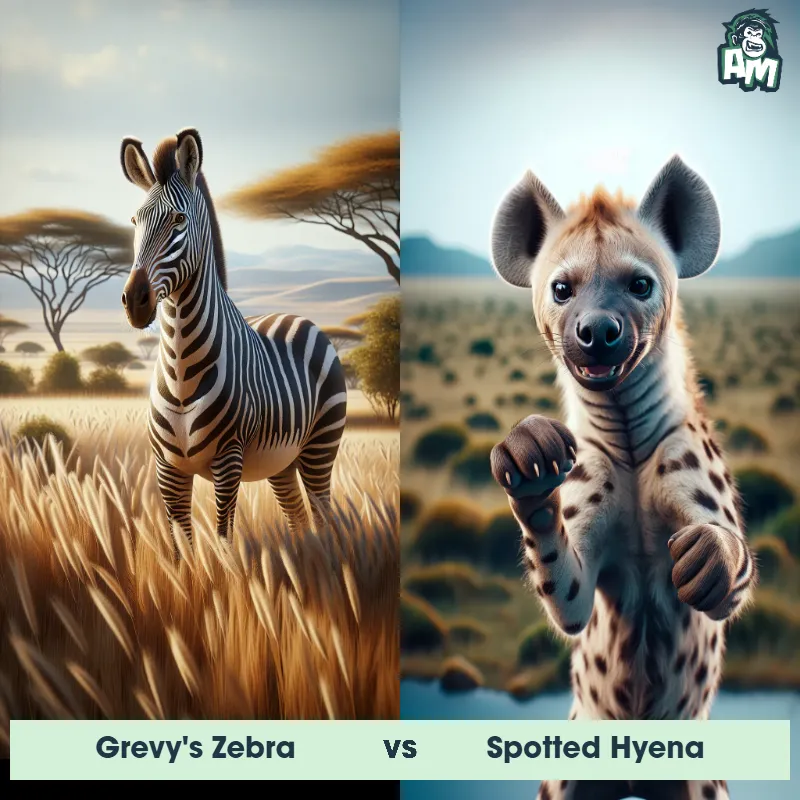The Grevy's Zebra
The Grevy's Zebra, also known as Equus grevyi, is the largest and most endangered species of zebra. It can be easily distinguished from other zebras by its unique narrow and straight black and white stripes, which continue down to its hooves. Grevy's Zebras have large rounded ears, a white belly, and a short bristly mane that stands erect. They have an average length of 8.5 to 9.8 feet and weigh between 770 and 990 pounds. Unlike other zebras, Grevy's Zebras have a more solitary nature and are not usually found in large groups.

| Grevy's Zebra | |
|---|---|
| Size | Up to 5 feet (152 centimeters) |
| Weight | Around 900 pounds (408 kilograms) |
| Speed | 40mph (64km/h) |
| Key Strength | Kicking with powerful legs |
| Biggest Weakness | Vulnerable to bites on its neck and flank |
| Scientific Name | Equus grevyi |
| Family | Equidae |
| Habitat | Arid regions |
| Geography | Kenya and Ethiopia |
| Diet | Herbivorous, vegetation |
| Lifespan | 15 years - 25 years |

The Grevy's Zebra
The Grevy's Zebra, also known as Equus grevyi, is the largest and most endangered species of zebra. It can be easily distinguished from other zebras by its unique narrow and straight black and white stripes, which continue down to its hooves. Grevy's Zebras have large rounded ears, a white belly, and a short bristly mane that stands erect. They have an average length of 8.5 to 9.8 feet and weigh between 770 and 990 pounds. Unlike other zebras, Grevy's Zebras have a more solitary nature and are not usually found in large groups.
Fun Fact: Grevy's Zebras have a complex social structure where males establish territories, and females have exclusive breeding rights within those territories, leading to a polygamous mating system.
| Grevy's Zebra | |
|---|---|
| Size | Up to 5 feet (152 centimeters) |
| Weight | Around 900 pounds (408 kilograms) |
| Speed | 40mph (64km/h) |
| Key Strength | Kicking with powerful legs |
| Biggest Weakness | Vulnerable to bites on its neck and flank |
| Scientific Name | Equus grevyi |
| Family | Equidae |
| Habitat | Arid regions |
| Geography | Kenya and Ethiopia |
| Diet | Herbivorous, vegetation |
| Lifespan | 15 years - 25 years |
Grevy's Zebra Matchups
We use AI to simulate matchups between the Grevy's Zebra and other animals. Our simulation considers size, strength, and natural predatory behaviors to determine the most likely outcome.

Can't find the Matchup you want?
Create Your Own MatchupGrevy's Zebra: Diet, Predators, Aggression, and Defensive Behaviors
What do Grevy's Zebras eat?
Grevy's Zebras are herbivores that primarily feed on grasses, shrubs, and leaves. They are highly adapted to survive on dry, nutrient-poor vegetation found in their native habitats in semi-arid environments.
Do Grevy's Zebras have any predators?
Yes, Grevy's Zebras have predators such as lions, hyenas, and wild dogs. They are vulnerable to predation, especially during times of drought when food and water sources become scarce, making them easier targets for predators.
Are Grevy's Zebras aggressive?
Grevy's Zebras are not known to be particularly aggressive towards each other or other species. They typically exhibit peaceful behavior within their social groups and only display aggressiveness when mating or protecting their territory.
Do Grevy's Zebras fight?
Grevy's Zebras do engage in fights, usually between males competing for mating rights or establishing dominance within their herd. These fights can involve biting, kicking, and pushing, but they are not as common or intense as in other species of zebra.
How do Grevy's Zebras defend themselves?
Grevy's Zebras defend themselves by using their powerful hind legs to kick predators or rivals. They also rely on their speed and agility to evade threats, as well as their distinct black-and-white stripes that can confuse predators in a herd.
What is the biggest weakness of Grevy's Zebras in a fight?
Despite their ability to kick and run fast, the biggest weakness of Grevy's Zebras in a fight is their vulnerability to larger predators such as lions. While they can defend themselves against smaller threats, they are not equipped to handle the strength and ferocity of apex predators in their ecosystem.
Fun Fact: Grevy's Zebras have an exceptional sense of smell, which they use to recognize each other and to distinguish between different individuals in their social group.
Fun Fact: The Grevy's Zebra has the ability to run at high speeds, reaching up to 40 miles per hour, which allows them to evade predators such as lions and hyenas.



